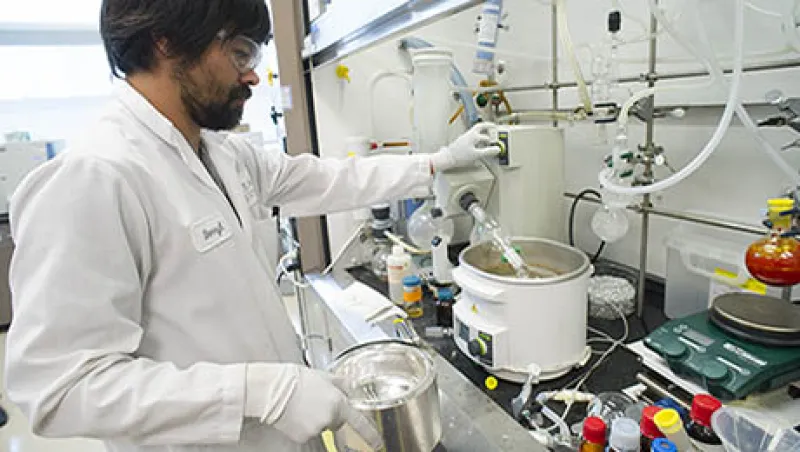After a 20-year career helping communities in Iraq and Afghanistan recover from war, Heather Block is now battling stage-four breast cancer and the looming threat of bankruptcy. Her doctor calls it good-news-bad-news: Although Block’s oncology drug combination is doing a better job of fighting her cancer and keeping her alive than anyone expected, each year she beats the odds she has to spend more on medication and the money she has so carefully saved over the years dwindles.
“It’s not that I’m opposed to innovation,” says Block, who reported during an HHS Pharmaceutical Forum last month that she was billed $270,000 for just one cancer drug over the past three years. “It’s keeping me alive. But we need to get to a balance between innovation and affordability.”
Block is one of many Americans who now depend on new, high-priced specialty drugs to survive: biologic oncology, autoimmune, diabetes, cardiology, hepatitis and HIV medications that are usually complicated to manufacture, transport and deliver. Americans are struggling, and often failing, to pay for these innovative treatments. As many as one in four who couldn’t afford the high prices went without their medicine last year, according to the Kaiser Family Foundation. Block, who turns 53 next week, is working with members of Congress to try to control prices in this rapidly growing segment of the pharmaceuticals industry.
According to a report published in November by the AARP Public Policy Institute, these drugs now cost an average of $53,384 a year, more than the median U.S. household income of $52,250. Spending on specialty drugs accounted for 35 percent of all drug purchases this year; researchers predict it will hit 50 percent between 2018 and 2020. Because of their high cost, specialty drugs are often not fully covered by insurance, and because of their biological basis they cannot easily be replaced by lower-price generics.
Legislators in six states have introduced cost transparency bills that would require drug companies to submit detailed reports explaining how they price their products, and there are murmurs on Capitol Hill about a federal transparency measure. However, some market watchers contend that the drug industry has too tight a hold on Congress for any price-related legislation to pass, while others think the U.S. should focus on reining in consumer demand for lower-quality drugs and price products based on their value, even if that means paying more.
“Gilead [Sciences] is a great example of the importance of value,” Barclays analyst Geoffrey Meacham says, explaining why his research team has steadfastly recommended investment in the Foster City, California–based company as it has developed and marketed the drugs Solvaldi and Harvoni, which cure hepatitis C in more than 90 percent of patients with only one course of treatment. Gilead’s hepatitis C therapies sold more in their first year than any other new product introduced in the history of the drug industry, with Solvaldi’s $10.4 billion and Harvoni’s roughly $2 billion in 2014 sales combining to place them just shy of the No. 1 spot in the U.S., taken by anti-inflammatory medication Humira, which brought in $12.5 billion for AbbVie. Their main competition is from AbbVie’s Viekira Pak and Technivie, which are cheaper but less effective at curing hepatitis C and recently have been shown to cause liver damage — the very thing these medicines seek to prevent.
“You can’t force a crappy drug on people just because it’s cheaper,” Meacham says. “Even the government realizes that.” Its overall payment for Gilead’s drug was $4.8 billion in 2014.
Still, the government says it cannot afford to give these drugs to everyone who needs them. According to the results of a Senate Finance Committee investigation released on December 1, Medicare spent $8.2 billion before rebates on Solvaldi and Harvoni in the 18 months following the former’s approval, and spent more on the two drugs in the first half of 2015 than in all of 2014. And although state Medicaid programs spent more than $1 billion on Gilead’s hepatitis C drugs last year, that amount treated less than 2.4 percent of the patients known to have the disease.
Senators Ron Wyden, a Democrat from Oregon, and Iowa Republican Chuck Grassley say Gilead acted against the public’s interest in setting prices, and they’re concerned that this sort of behavior will become the industry norm in setting specialty drug prices unless there’s pushback. According to the Senate report Wyden and Grassley cosponsored, Solvaldi was originally projected to cost $36,000 per 12-week course of treatment but soared to $84,000 after Gilead received advice from Barclays and information provider IMS Health, and held internal discussions about not giving in to pressure from patient advocates.
Gilead spokeswoman Michele Rest says the company priced Solvaldi and Harvoni “responsibly and thoughtfully,” initially lining them up with the previous standards of care and then discounting Harvoni by more than 50 percent for the Veterans Health Administration and Medicaid. “With the rebates and discounts now in place, the prices today are less than the cost of prior regimens, even though our therapies have significantly higher cure rates and very few side effects,” Rest says.
Even if prices for specialty drugs are made more transparent through legislation or congressional inquiry, it’s unlikely that they will come down any further than they already have without government intervention. The good-news-bad-news about specialty medications is that they are often personalized. This leaves competition alone an unlikely solution for many patients.
“I’m on a specialty drug, and it’s the only one we know works, so I’m stuck,” Block says. When Institutional Investor spoke to Block, she was headed from her home in Lewes, Delaware, to Washington, where she is working with U.S. Representative Lloyd Doggett, a Texas Democrat, to pressure the Obama administration to act for more drug price transparency. “If we make Americans informed consumers, they will challenge this existing Byzantine process and ensure that everyone has fair access to drugs regardless of income,” she says. However, Block is not able to make a permanent move to the Hill any time soon: “If I go bankrupt, hey, at least they can’t take my house.”
This is the third in a series of five stories on the growing controversy swirling around the U.S. pharmaceuticals industry over drug prices. Also see “Drug Wars: The Battle to Put a Lid on Rising Drug Prices” and “Aggressive Pharma Ads Yield Results — and Complaints.”






